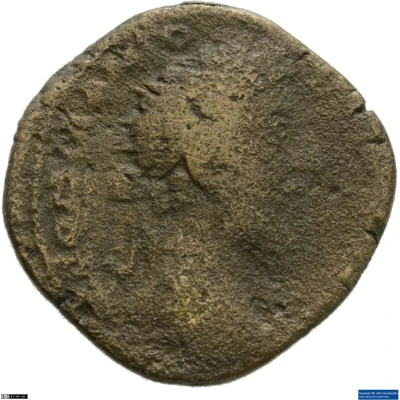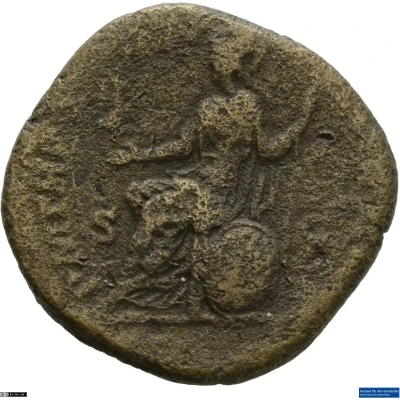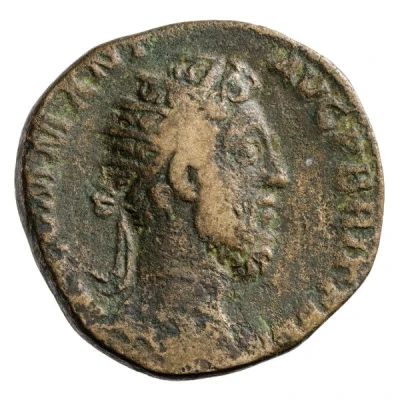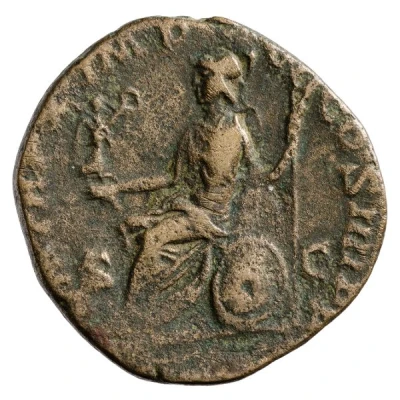


© Münzsammlung des Seminars für Alte Geschichte, Albert-Ludwigs-Universität Freiburg (CC BY-NC-SA 3.0 DE)
Dupondius - Commodus P M TR P VIIII IMP VII COS IIII P P S C; Roma and Victory
184 year| Bronze | 9.9 g | 26 mm |
| Issuer | Rome › Roman Empire (27 BC - 395 AD) |
|---|---|
| Emperor | Commodus (Lucius Aurelius Commodus) (177-192) |
| Type | Standard circulation coin |
| Year | 184 |
| Value | 1 Dupondius = ⅛ Denarius |
| Currency | Denarius, Reform of Augustus (27 BC – AD 215) |
| Composition | Bronze |
| Weight | 9.9 g |
| Diameter | 26 mm |
| Shape | Round (irregular) |
| Technique | Hammered |
| Demonetized | Yes |
| Updated | 2024-10-06 |
| Numista | N#265807 |
|---|---|
| Rarity index | 100% |
Reverse
Roma, helmeted, draped, seated left on shield, holding Victory in extended right hand and vertical spear in left hand.
Script: Latin
Lettering: P M TR P VIIII IMP VII COS IIII P P S C
Translation:
Pontifex Maximus, Tribunicia Potestate Nona, Imperator Septimum, Consul Quartum, Pater Patriae. Senatus Consultum.
High priest, holder of tribunician power for the ninth time, supreme commander (Imperator) for the seventh time, consul for the fourth time, father of the nation. Decree of the senate.
Comment
Example of this type:Münzsammlung des Seminars für Alte Geschichte, Albert-Ludwigs-Universität Freiburg
Source:
Online Coins of the Roman Empire (OCRE)
Interesting fact
One interesting fact about this coin is that it features the image of the Roman goddess Victory on the reverse side, which was a common motif on Roman coins during the reign of Commodus. The image of Victory was meant to symbolize the power and dominance of the Roman Empire, and it was often depicted holding a wreath or a palm branch, as seen on this coin. The use of Victory as a symbol of Roman power and prosperity was a common theme in Roman art and architecture during this time period.

